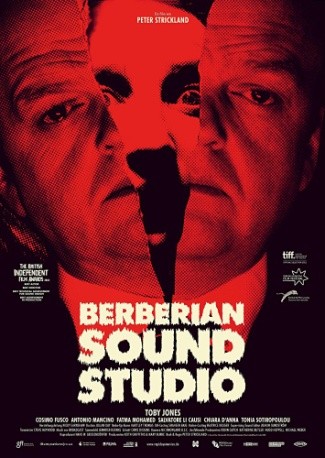In 2012, director Peter Strickland released his second feature film, entitled “Berberian Sound Studio.” This unique psychological-horror movie presents us with a riveting performance by Toby Jones, who portrays a well-mannered sound designer. The film is set in the early 1970s and Gilderoy has been chartered from England to Italy to work on a film entitled “The Equestrian Vortex.” Upon arriving to the studio to work on the film, he learns that the project is actually a horror movie, which is a genre he has not delved into before. Regardless, Gilderoy begins to work on the film, creating sound effects for some of the most gruesome scenes imaginable, causing him to feel more and more isolated from the work he is doing. Gilderoy begins to lose his grip on reality as he slowly begins to get pulled into the horror of the film and the mystery surrounding the other people he works with.
One of the strongest components of the film is the arguably perfect performance by Jones who nails his interactions with the other filmmakers as he struggles to assimilate into an environment in which he is clearly uncomfortable. We sympathize with him as we witness Gilderoy reluctantly record sound effects for scenes that are explicitly violent. Despite never seeing any footage from the film within the film, the sound department of “Berberian Sound Studio” does a phenomenal job painting a visual image through the use of sound.
As the film progresses, the lines between Gilderoy’s reality and the film that he is working on begin to blur in unsuspecting ways. Consequently, Strickland is able to masterfully blur the line of reality for the viewer by creating an uncertainty of what sound is coming from the film itself, and what sound is coming from the film within the film. This line of ambiguity continues to build up to the end of the film, like the eerie sound of a Shepard-Risset Glissando. Just like this sound illusion, we think we have reached a new height of tension, but our brain is merely being tricked by a stimulus that it has difficulty perceiving as it grows.
By the end of the film, we are left wondering where exactly it was that the film crossed over from reality to a new area, or if it did at all. Like most psychological-thrillers, they are not for everybody, as many people get wrapped up in the logistics of what is happening. Regardless, I recommend that everyone gives this film a try, as it is a mere 92 minutes and is guaranteed to bring each viewer on their own unique interpretive ride. Who knows, you may be intrigued to check it out again as I was.
Sam’s Stars: 9/10




